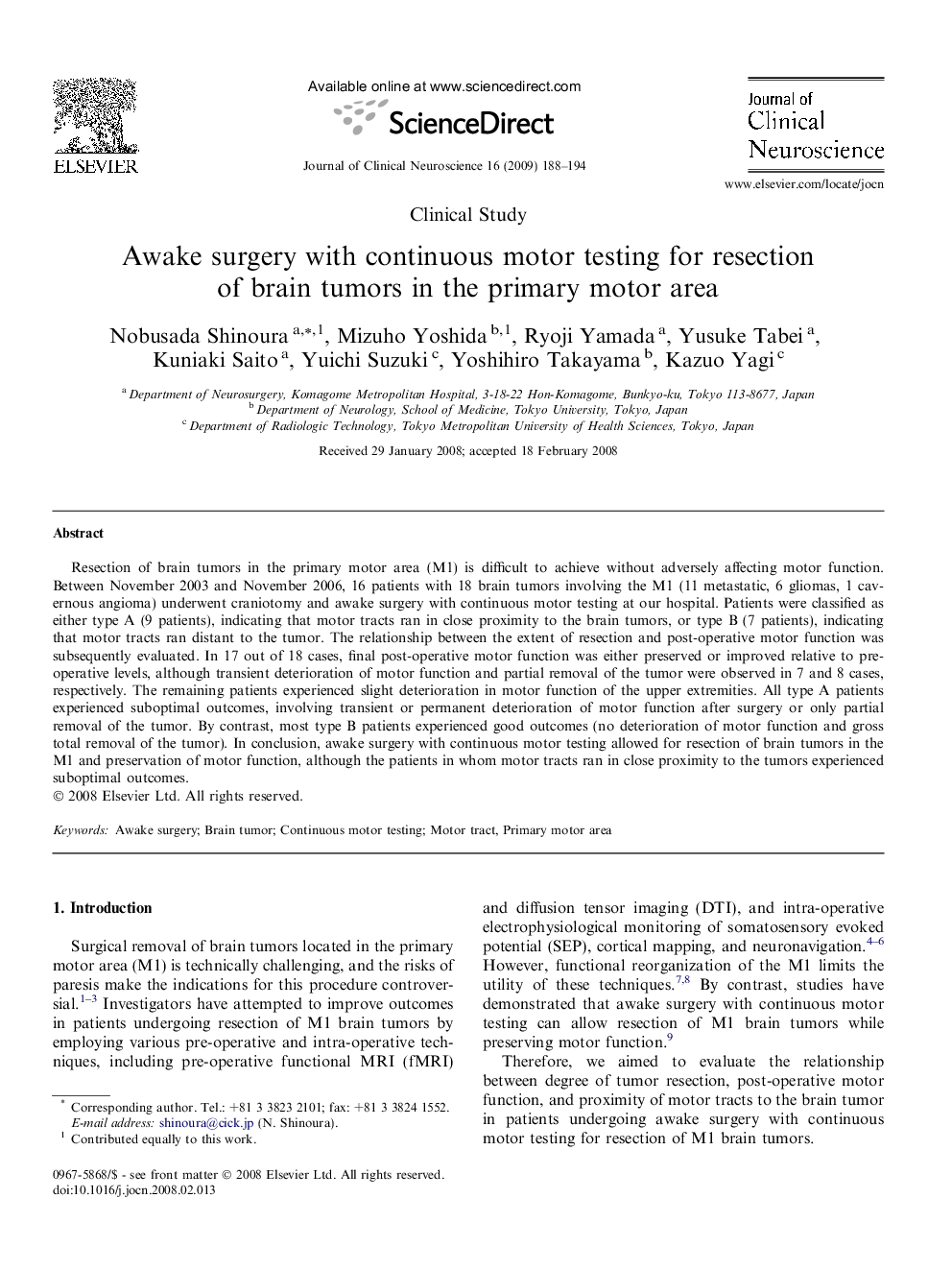| Article ID | Journal | Published Year | Pages | File Type |
|---|---|---|---|---|
| 3061472 | Journal of Clinical Neuroscience | 2009 | 7 Pages |
Resection of brain tumors in the primary motor area (M1) is difficult to achieve without adversely affecting motor function. Between November 2003 and November 2006, 16 patients with 18 brain tumors involving the M1 (11 metastatic, 6 gliomas, 1 cavernous angioma) underwent craniotomy and awake surgery with continuous motor testing at our hospital. Patients were classified as either type A (9 patients), indicating that motor tracts ran in close proximity to the brain tumors, or type B (7 patients), indicating that motor tracts ran distant to the tumor. The relationship between the extent of resection and post-operative motor function was subsequently evaluated. In 17 out of 18 cases, final post-operative motor function was either preserved or improved relative to pre-operative levels, although transient deterioration of motor function and partial removal of the tumor were observed in 7 and 8 cases, respectively. The remaining patients experienced slight deterioration in motor function of the upper extremities. All type A patients experienced suboptimal outcomes, involving transient or permanent deterioration of motor function after surgery or only partial removal of the tumor. By contrast, most type B patients experienced good outcomes (no deterioration of motor function and gross total removal of the tumor). In conclusion, awake surgery with continuous motor testing allowed for resection of brain tumors in the M1 and preservation of motor function, although the patients in whom motor tracts ran in close proximity to the tumors experienced suboptimal outcomes.
